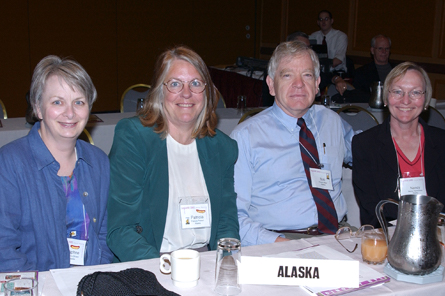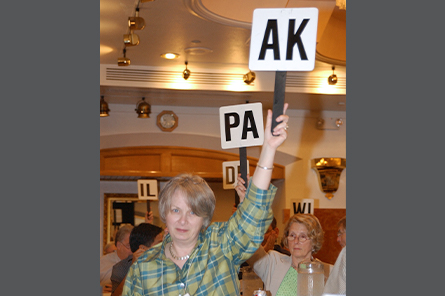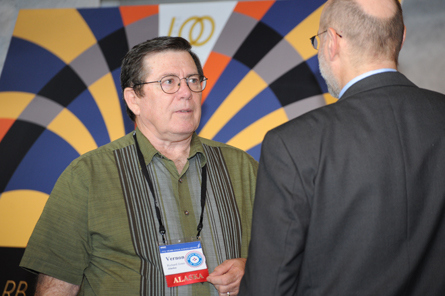Alaska
Law Passed: 1939 • Joined NCARB: 1941 • Region 6—Western (1963)
The Components of Licensure
Education
1978-1988: During the time Wayne Jensen served on the AELS board, NCARB debated whether to require an accredited degree for NCARB certification. Alaska did not require an accredited degree for licensure at the time, nor did NCARB for certification. Alaska regulations followed NCARB Model Law for licensure and comity. Jensen and Wally Wellenstein, members of the AELS board, testified at NCARB Annual Meetings against requiring an accredited degree. However, when the accredited degree was approved for NCARB certification, the AELS board accepted the requirement for Alaska licensure to maintain continuity with most of the other jurisdictions that had adopted the requirement.
1985: A degree from a NAAB-accredited program is required for initial licensure and certification.
2005: Per NCARB’s recommendations, continuing education is required for license renewal.
Experience
1982: Alaska Board endorses the IDP.
1990: Completion of the IDP is required.
Examination
1963: Alaska Board begins administering NCARB’s national exam.
1966: NCARB’s exam is required.
1974: Architects, engineers, and landscape architects must complete an arctic engineering course.
1978: At the September 1978 meeting, the board members discussed a discrepancy between the 1977 and 1978 Circular #1. The meeting minutes indicated that the board had contacted Hayden Mims of NCARB who stated it would be corrected.
2008: In addition to passing the ARE, applicants must also complete a jurisprudence questionnaire.
Noteworthy
- Territorial Senator Victor Rivers introduced the bill to establish a board of registration for engineers and architects, the bill passed, and Senator Rivers was appointed to the newly formed board. A high volume of correspondence between Governor Troy and Attorney General James Truitt followed. Ultimately, it was determined that the senator could not serve on the board.
- After the state legislature passed a sunset clause in the late-1970s, members of the Alaska Board were tasked with explaining their role to policymakers. As a result, the board’s composition—which already included engineers and land surveyors—was altered to change one of the architect seats to a public member seat.
- In the late-1970s into the 1980s, construction related to the Prudhoe Bay Oil Field boom generated a large influx of architects, engineers, and land surveyors wanting registration both by examination and comity. The board held four meetings per year during that time, and members recalled stacks of applications covering the entire meeting room table. The process involved review by at least two board members and was considered a very daunting task. Members indicated it took most of the two-day meetings, which still occurs today despite technical advancements.
- During a board meeting in a state office building in Anchorage, a person arrived to testify on an issue before the board carrying a large caliber rifle. Wayne Jensen was the chair at the time, and he quietly asked the staff member to leave the room and contact security. It turned out that the person had no bad intentions and was taking the rifle to be repaired. The security guard took the rifle and stayed in the room until the testimony was over.
- George A. Crossman (#A-7) became the first architect to be licensed in the Territory of Alaska, as well as the seventh registrant with the Alaska State Board of Registration for Architects, Engineers, and Land Surveyors (AELS).
Notable People
First Architect Board Members
Harold Foss
N. Lester Troast
George Crossman
The other seats comprising the initial AELS board included two mining engineers, a civil engineer, an electrical engineer, and a structural engineer, for a total of nine seats.
First Woman Licensed as an Architect
April 29, 1957: Margaret G. Fritsch
First Architect License Issued
June 21, 1939: George A. Crossman
- The AELS board also issued its first license to Frank A. Metcalf, a civil engineer from Juneau, Alaska.


